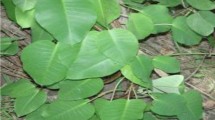Abstract
It has been reported on beneficial effects of onion extracts containing a large amount of quercetin glucosides for several decades. This study was performed to investigate antioxidative and hepatoprotective effects of fermented onion (Allium cepa L.) extracts containing higher amount of quercetin aglycone (FOQ) against oxidative stress by 2,2′-azobis (2-amidinopropane) dihydrochloride (AAPH) treatment in rats. RP-HPLC analysis elucidated that the fermented onions contain larger amount of quercetin aglycone than that of fresh onions, and the content of quercetin aglycone in 1.0 kg of fresh and fermented onion pickles was 261.34 ± 19.47 and 360.25 ± 27.32 mg, respectively. In vitro free radical scavenging assay showed potently radical-quenching ability of FOQ against reactive oxygen species (ROS) such as hydroxyl, superoxide, and carbon-centered radical using electron spin resonance (ESR) spectroscopy. Biological parameters in plasma and liver tissue were evaluated with 36 healthy Sprague–Dawley rats in the experimental groups (n = 6); control (basal diet), AAPH treated, quercetin aglycone treated, ascorbate-AAPH treated, quercetin aglycone-AAPH treated and FOQ-AAPH treated group. The results revealed that quercetin aglycone or FOQ intakes could increase the level of glutathione (GSH), enzymatic activity of glutathione reductase (GSSG-R), and catalase (CAT), but could decrease the level of glutamate oxaloacetic transaminase (GOT), glutamate pyruvate transaminase (GPT), thiobarbituric acid reactive substance (TBARS) production with the abnormal levels caused by AAPH induced oxidative stress. Moreover, histological study for central vein (CV) area of hepatic lobule was illustrated that cytoplasmic phase near the CV in the qurecetin and FOQ pretreated before AAPH injection could be maintained with normal morphology like that of the control. The present study illustrated that the fermented onion extracts containing larger amount of quercetin aglycone (FOQ) have antioxidative activities against AAPH-induced carbon-centered radical, and its activity can present the protective effect against hepatic damage by oxidative stress similar with the ability of ascorbate (vitamin C).


Similar content being viewed by others
References
Herrmasnn K (1976) Flavonoids and flavones in food plants: a review. J Food Technol 11:433–438
Rice-Evans CA, Miller NJ, Paganga G (1996) Structure-antioxidant activity relationships of flavonoids and phenolic acids. Free Radic Biol Med 20:933–956
Bors W, Heller W, Michel C, Saran M (1990) Methods Enzymol 186:343–355
Manach C, Texier O, RCgCrat F, Agullo G, Demign C, RCmCsy C (1996) J Nutr Biochem 7:375–380
Zhang Z, Chang Q, Zhu M, Huang Y, Hoa WKK, Chena ZY (2001) J Nutr Biochem 12:144–152
Andrea JD, Susan MD, Ridley S, Rhodes M, Rhodes MJC, Morgan MRA, Williamson G (1998) FEBS Lett 436:71–75
Bekhit AED, Geesink GH, Ilian MA, Morton JD, Sedcole JR, Bickerstaffe R (2004) Eur Food Res Technol 218:507–514
Erlund I (2004) Nutr Res 24:851–874
Coward L, Barnes NC, Setchell KDR, Barnes S (1993) J Agric Food Chem 41:1961–1967
Murota K, Mitsukuni Y, Ichikawa M, Tsushida T, Miyamoto S, Terao J (2004) J Agric Food Chem 52:1907–1912
Sellappan S, Akoh CC (2002) J Agric Food Chem 50:5338–5342
Rosen GM, Rauckman EJ (1984) Methods Enzymol 105:198–209
Zhao BL, Li XJ, He R, Cheng SJ, Xin W (1989) J Cell Biophys 14:175–185
Hiramoto K, Johkoh H, Sako KI, Kikugawa K (1993) Free Radic Res Commun 19:323–332
National Research Council (1985) National Institutes of Health, Bethesda, no 85-23
American Institute of Nutrition (1977) J Nutr 107:1340–1348
Reitman S, Frankel S (1957) Am J Clinic Pathol 28:56–63
Ohkawa H, Ohishi N, Yagi K (1979) Anal Biochem 95:351–358
Cohn VH, Lyle JA (1996) Anal Biochem 14:434–440
Worthington DJ, Rosemeyer MA (1976) Eur J Biochem 67:231–238
Lawrence RA, Burk RF (1976) Biochem Biophys Res Commun 71:952–958
Beers RF, Sizer IW (1952) J Biol Chem 195:133–140
Markwell MAK, Hass SN, Dieher DD, Tolbert NE (1978) Anal Biochem 87:206–210
Terao K, Niki E (1986) Free Radic Biol Med 2:193–201
Hertog MGL, Hollman PCH, van de Putte B (1992) J Agric Food Chem 40:2379–2383
Hayek T, Fuhrman B, Vaya J, Rosenblat M, Belinky P, Coleman R, Elis A, Aviram M (1997) Arterioscler Thromb Vasc Biol 17:2744–2752
Negre-Salvayre A, Salvayre R (1992) Free Radic Biol Med 12:101–106
DeWhalley CV, Rankin SM, Hoult JR, Jessup W, Leake D (1990) Biochem Pharmacol 39:1743–1750
Yamamoto N, Moon JH, Tsushida T, Nagao A, Terao J (1999) Arch Biochem Biophys 372:347–354
Jung WK, Rajapakse N, Kim SK (2005) Eur Food Res Technol 220:535–539
Frei B (1991) Am J Clin Nutr 54:1113–1118
Frei B, Stocker R, England L, Ames BN (1990) Adv Exp Med Biol 264:155–163
Yamamoto Y, Niki E, Eguchi J, Kamiya Y, Shimasaki H (1985) Biochim Biophys Acta 819:29–36
Bailey SM, Landar A, Darley-Usmar V (2005) Free Radic Biol Med 38:175–188
Goldberg DM, Watts C (1965) Gastroenterology 49:256–261
Nordmann R (1994) Alcohol Alcohol 29:513–522
Blake DR, Allen RE, Lunee J (1987) Br Med Bull 43:371–385
Guerri C, Grisolia S (1980) Adv Exp Med Biol 126:365–374
Saravanan R, Viswanathan P, Pugalendi KV (2006) Life Sci 78:713–718
Acknowledgment
This study was supported by a grant of the Korea Health 21 R&D Project, Ministry of Health and Welfare, Republic of Korea (project No. A060713)
Author information
Authors and Affiliations
Corresponding author
Rights and permissions
About this article
Cite this article
Son, Y.H., Jung, WK., Jeon, YJ. et al. Protective effects of fermented onion juice containing higher amount of querectin aglycone against oxidative stress by 2,2′-azobis (2-amidinopropane) dihydrochloride (AAPH) treatment in Sprague–Dawley rats. Eur Food Res Technol 226, 473–482 (2008). https://doi.org/10.1007/s00217-007-0559-2
Received:
Revised:
Accepted:
Published:
Issue Date:
DOI: https://doi.org/10.1007/s00217-007-0559-2




